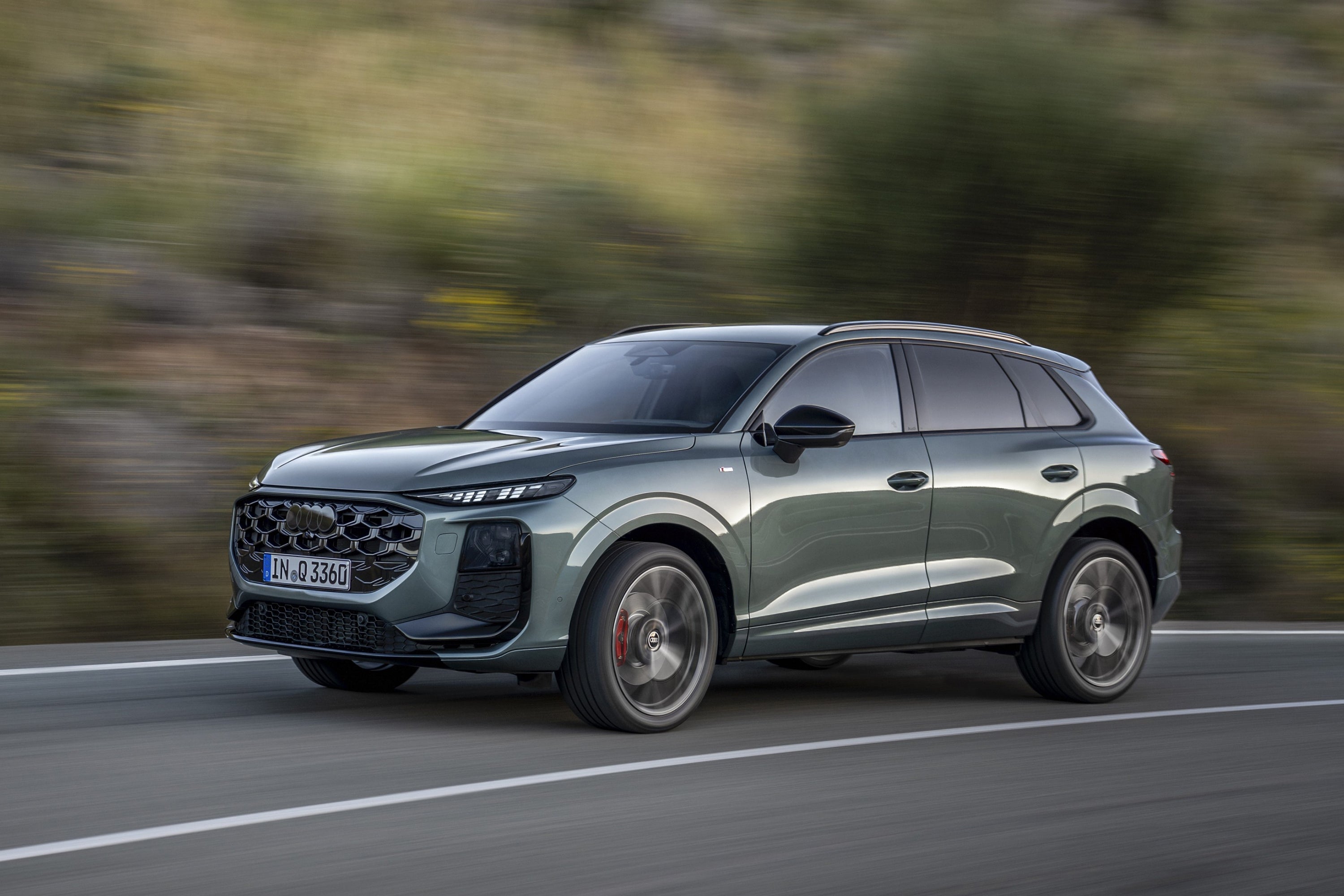Audi Q3 Review 2025: Price, specs & boot space
Written by Matt Robinson
Quick overview
Pros
- Smart new looks
- Strong engine line-up, including a diesel option
- Retains clever folding rear seat bench
Cons
- Expensive even before you start adding options
- Less boot space than before
- We haven't driven it yet
Verdict: Is the Audi Q3 a good car?
"The new Audi Q3 certainly looks the part, but we're hoping it'll better the strong outgoing model in more ways than just aesthetics."
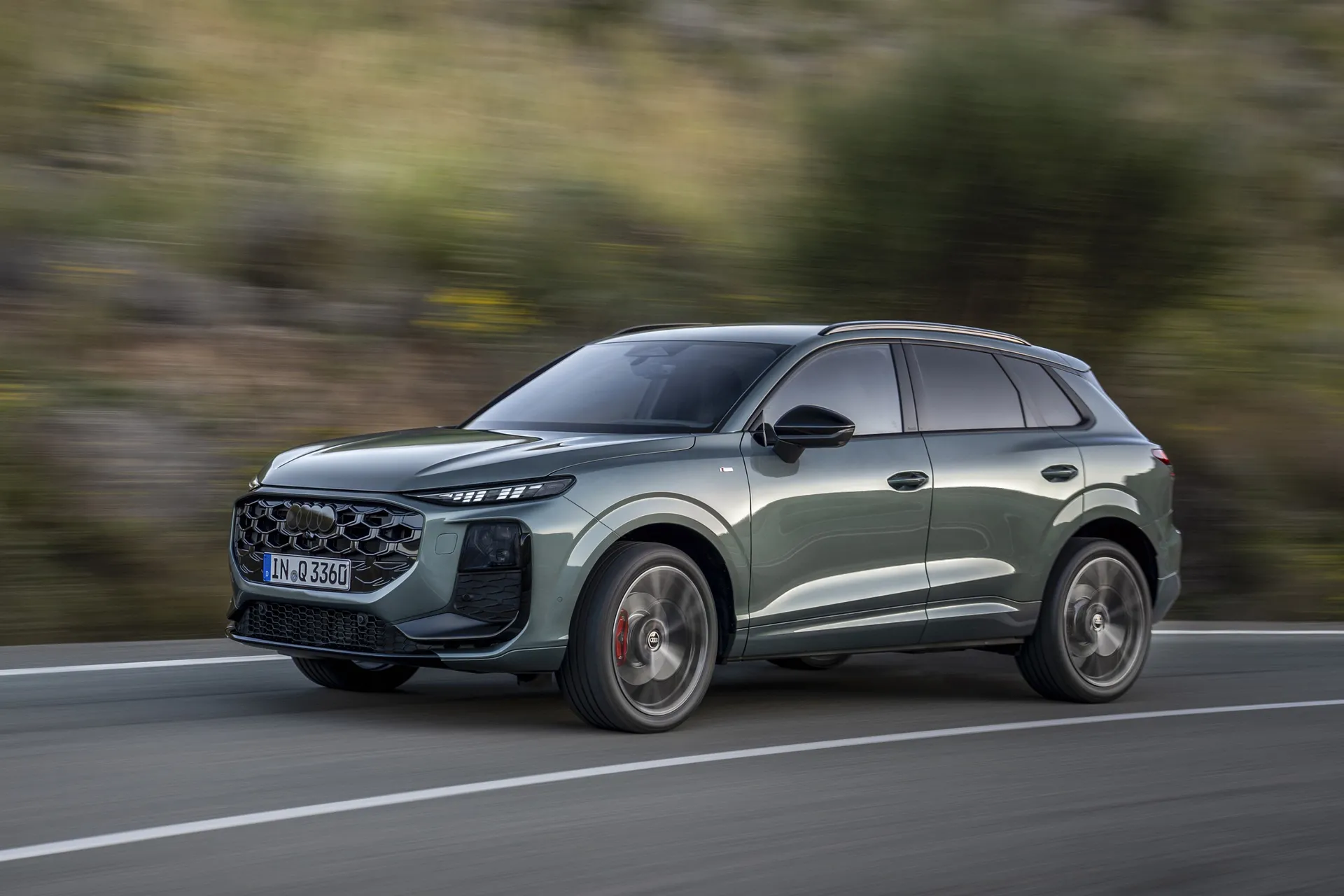
As one of the best-selling models in the Audi range, it's crucial that the new Q3 hits the spot. As an arguably more handsome-looking car than the outgoing second-generation model, it's certainly off to a good start. Although we're on the fence as to whether or not those light-up Audi rings at the back are a bit...naff.
The second-generation version model was a big step up from the first Q3, which was a bit disappointing in some areas. The new one, then, doesn't need to trounce the outgoing model, but if Audi can make it just a bit better in most areas, it's onto a winner.
Unfortunately, the German brand hasn't managed that in terms of practicality, with the Q3 actually dipping slightly in terms of boot volume. It does retain the neat folding and reclining rear seat, though, helping it stand out against competitors. And it still does well in the segment in terms of luggage space, anyway.
While we're looking inside, the cabin is classy and minimalistic, although, as is often the case in new cars, it looks like Audi might have gone a bit too far in terms of deleting buttons. Are physical climate control buttons and dials too much to ask? Real buttons on the steering wheel rather than fiddly touch-sensitive pads might be nice, too.
On a more positive note, the engine line-up looks strong. As before, there's a plug-in hybrid, although this one has nearly double the range of the last Q3 PHEV. It's also good to see that Audi is still offering a diesel engine, which is far from a given these days, with the fuel type falling out of favour. If preferred, there are pure petrol engines ranging in output from 150PS to a punchy 265PS.
You can, of course, have all of this stuff in the closely related Volkswagen Tiguan, but it can't quite match the Audi's premium appeal, and its cabin isn't as plush. Stiffer competition comes from outside the Volkswagen Group stable, with the excellent BMW X1 looking like a strong alternative. We'll find out how it fares against its competitors soon, and will duly update this page as soon as we've driven the new Audi Q3.
Looking for a used car for sale? We've got 100s of Audi Approved Used Cars for Sale, for you to choose from, including a wide range of Audi Q3s for sale. If you're looking for the high performance version of the Q3, you need our Audi RS Q3 review.
Is the Audi Q3 right for you?
If you're after a compact yet practical SUV that has a top-notch badge (and one that lights up, at that!), absolutely. The Q3 offers a relatively attainable entry point to the Audi brand, which should prove easy to live with, and thanks to a broad spectrum of powertrains, there's likely an option to suit you down to the ground.
What's the best Audi Q3 model/engine to choose?
We'll have a clearer picture once we've driven the new Q3, but already, we can get a sense of how it'll shape up. For most, we reckon the base 1.5-litre engine makes the most sense, unless you're expecting to use your Q3 for a lot of longer journeys, in which case it might be worth putting up with the less refined nature of the diesel. Unless all-wheel drive is essential, or you're really bothered about straight-line performance, the 2.0-litre versions are probably worth avoiding due to the potential fuel bills.
As for the trim level, Sport should tick most of the key boxes in terms of equipment. A lot of what's added by the S Line and Edition 1 trim levels is based on aesthetics.
SUV or Sportback? Well, only you can decide if the looks of the Sportback are worth the extra premium, and the (admittedly relatively small) practicality hit. Personally, we think the SUV has better proportions.
What other cars are similar to the Audi Q3?
The Q3's main competition will come in the form of the BMW X1 and Mercedes-Benz GLA. The BMW is a particularly strong choice if driving fun is high on your agenda, but still very practical, and has a wide range of available powertrains, including a sporty M35i model.
The GLA has more of a focus on comfort, unless you're looking at its spicier offshoots, the AMG GLA 35 and AMG GLA 45. The GLA is the oldest of the lot, though, having launched in 2020. The BMW is a bit fresher, coming out in 2022. There are plenty of alternatives away from the German 'Big Three', though. The Volvo XC40 is one, although it's even older than the GLA, first appearing in 2017.
If you're considering the Q3 in the first place, it's likely the Audi badge is a key part of the appeal, but if not, the Volkswagen Tiguan is made from a lot of the same bits and pieces and is cheaper than the Q3.
Comfort and design: Audi Q3 interior
"As we've come to expect from a modern Audi, the Q3 gets a stylish and minimalistic cabin. Judging by what we've found with the larger Q5, though, the steering wheel button pads could prove a bit annoying"
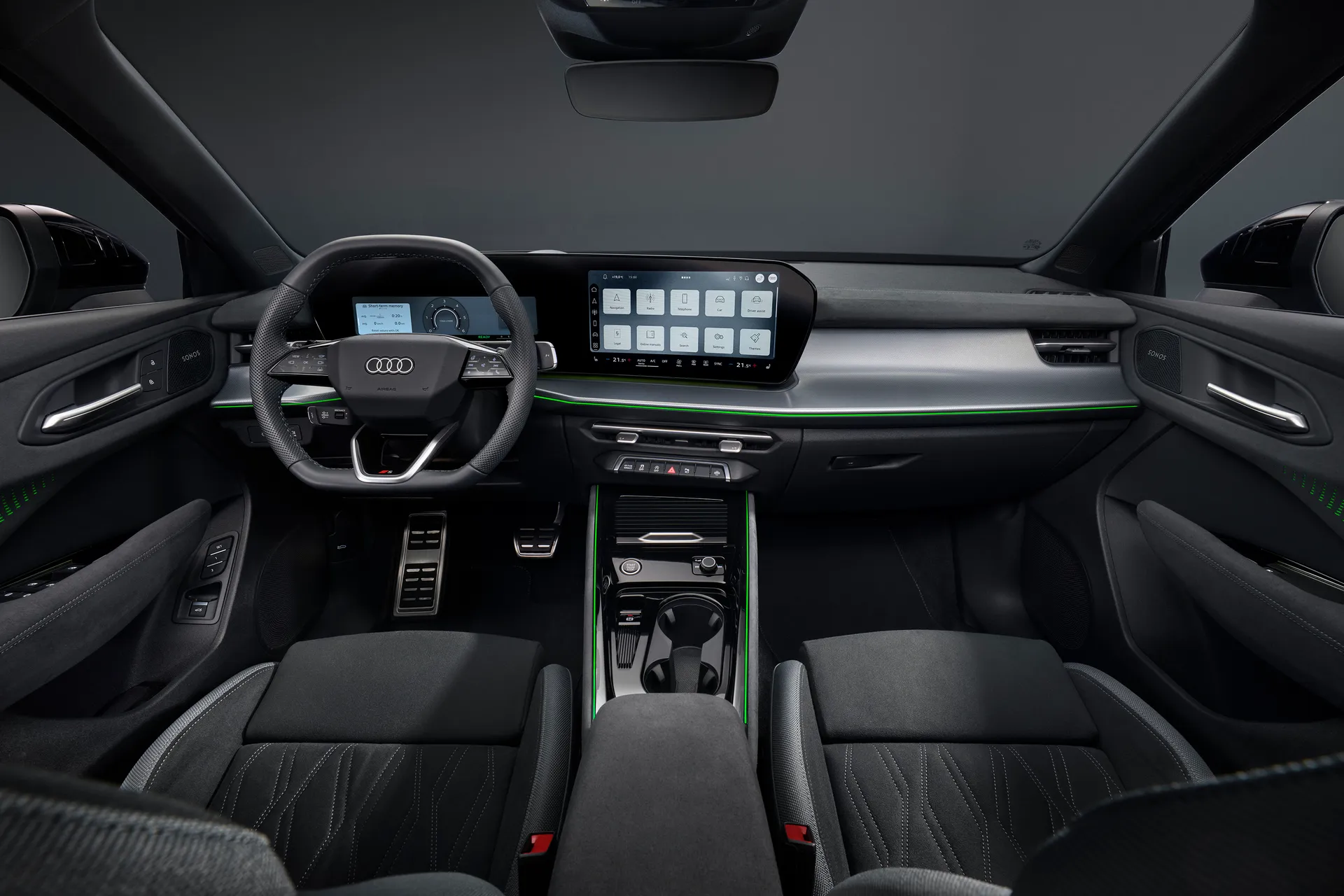
As is now all the rage, the Q3 gets a large, curved panel incorporating both the infotainment screen and an 11.8-inch 'virtual cockpit', the latter being Audi speak for a digital instrument cluster.
The dashboard has the kind of minimalistic design we've gotten used to in recent Audi models, and across the car industry, really. And sadly, this quest to declutter the cabin does mean there's a notable absence of physical climate controls. You'll have to use a bank of controls along the bottom of the infotainment screen, which, from what we can work out, are displayed permanently.
Speaking of missing buttons, the steering wheel doesn't get any at all. Yes, it might look like it does have some, but they're actually touch-sensitive pads, and from what we found with the same parts used in the larger Audi Q5, they're fiddly. Audi is far from alone in using such technology – sister brand Volkswagen rolled out a similar system across much of its range before bringing back 'real' buttons due to negative customer feedback.
Infotainment: Touchscreen, USB, nav and stereo in the Audi Q3
All versions of the Q3 get a decent-sized 12.8-inch touchscreen infotainment system. It's one of a growing number of factory-fitted systems to use Google's Android system, making it possible to download your favourite apps (for instance, Google Maps and Spotify) to use on the go, rather than having to stream them via a smartphone.
There's a Sonos surround system included in the Sound & Vision Pack, which can be specced on the S Line and Edition 1 versions of the car. The 420-watt system powers no less than 12 speakers, including a centre speaker and subwoofer.
Under the armrest, you'll find two USB-C ports plus a cooled wireless smartphone charging pad. Rear-seat passengers get access to another pair of USB-C sockets.
Space and practicality: Audi Q3 boot space
While it still has a sliding and reclining seat bench in the rear, just like the old Q3, it's a bit disappointing to see that boot space has dropped. It's 488 litres with the rear seats slid all the way back, and 575 litres with them pushed as far forwards as they'll go, compared to 530 litres and 675 litres previously. The e-hybrid version takes a big hit in terms of capacity due to where the high-voltage battery pack sits – it can carry a much more modest 375 litres.
Although the above boot space figures also apply to the Q3 Sportback, it gets slightly less space when the rear seats are folded flat because of its sloping rear tailgate (such figures assume you're loading to the roof). The Q3 Sportback can carry up to 1,289 litres, or 1,196 as an e-hybrid, while the Q3 SUV is good for up to 1,386 litres or 1,293 litres.
A BMW X1 manages 540 litres, for comparison – roughly equivalent to a Q3 with its rear seat positioned somewhere between its two extremes. Its plug-in hybrid derivative doesn't drop anywhere near as much space as the Q3's, though, and it does a lot better with its rear bench folded, offering up to 1,600 litres of cargo volume.
We can't comment on how roomy it'll feel inside just yet, but that reclining rear seat bench is sure to be a hit with passengers back there, just as it was for the last Q3.
The Q3 has a drive selector mounted on the steering column, which Audi says has enabled it to create a larger storage area in the centre console, found under a sliding lid. Around there you'll also find a pair of cupholders.
Handling and ride quality: What is the Audi Q3 like to drive?
"We'll have to wait and see what the Q3 is like to drive, but we're expecting a car that prioritises comfort and stability over sportiness."

That's what the old Q3 did, and it'll likely be more of the same this time. Audi also says that the Q3 comes with "new adaptive suspension that enables a balance between comfort and dynamics".
Your chosen spec will also have some bearing on how the Q3 feels to drive. Some powertrains are exclusively front-wheel drive, while others can only be combined with 'quattro' all-wheel drive. Edition 1 models also come with sports suspension, which will likely ride firmer than other models. Edition 1 cars also have the biggest wheels of the lot as standard at 20 inches in diameter, which will have a bearing on comfort.
What engines and gearboxes are available in the Audi Q3?
The latest Q3 has a diverse engine line-up encompassing petrol, plug-in hybrid and diesel options. It's particularly pleasing to see the latter type represented at a time when many manufacturers are moving away from the fuel, which still has plenty of economy benefits.
As far as the petrol engines go, you can have either a 1.5 or 2.0-litre four-cylinder unit. The 1.5-litre engine produces 150PS and 250Nm of torque, making for a perfectly respectable 0-62mph time of 9.1 seconds. The 2.0-litre engine comes in two flavours, the first producing 204PS and 350Nm of torque for a 6.1-second 0-62mph time.
The second is good for 265PS, dropping the 0-62mph time to a hot hatch-bothering 5.7 seconds. The plug-in hybrid is more powerful, though, blending a 1.5-litre engine with a 25.7kWh battery pack and a powerful electric motor for an impressive 272PS. It's slower than the most powerful petrol model, however, because a battery pack of that size is quite heavy. As a result, its 0-62mph time is almost a second behind at 6.8 seconds.
Finally, there's a single diesel option which is good for 150PS and 360Nm of torque. It's the slowest Q3, but only just, hitting 62mph from rest in 9.3 seconds. All use seven-speed dual clutch 'S Tronic' automatic gearboxes, apart from the plug-in hybrid, which uses a six-speed unit. This time, no manual gearbox is available. If you want 'quattro' all-wheel drive, it'll have to be one of the 2.0-litre petrol units, which are fitted with the system as standard. All others are exclusively front-wheel drive.
Previously, there was a hot Audi RS Q3 at the top of the range with a potent 400PS five-cylinder engine shared with the mighty RS3. It's unclear if there'll be a new RS Q3, but we'd be surprised if it ends up with another five-pot, because it'll be hard to keep that engine alive amidst tightening emissions rules.
Refinement and noise levels
Although this is another unknown until we've driven the Q3, we have had plenty of experience with the Q3's powertrains in other Volkswagen Group cars to give us some idea in terms of refinement. Fortunately, they all score pretty well.
The petrol engines are smooth, while the mild-hybrid technology on the 1.5-litre unit will make for a more relaxing time when it shuts off the engine to coast to a stop. The diesel engine will inevitably be grumblier, but the 2.0-litre unit is refined as far as diesels go. Meanwhile, the plug-in hybrid's impressive electric-only range means you might not be listening to its internal combustion component all that often.
It should be quiet on the move, too. Audi boasts that the Q3 is the first model in its class to use acoustic glazing, which is said to combine with optimised sealing and insulation to give "a harmonious acoustic concept with a noticeable improvement in driving comfort". We'll have to wait and see how that pans out in reality.
Safety equipment: How safe is the Audi Q3?
It's a little too soon to be talking about Euro NCAP crash test results for the Q3. For whatever it's worth, the previous Q3 achieved the full five-star rating, as has every new Audi model assessed in 2024 and 2025.
All Q3s come with lane departure warning, hill hold assist, a 360-degree parking camera, traffic sign recognition, a driver attention monitor, 'active front assist' including evasion and turning assistance, front cross traffic assist and autonomous emergency braking. There's also an optional enhanced driving comfort pack, which brings with it an enhanced driving assistance system including lane change assistance.
MPG and fuel costs: What does an Audi Q3 cost to run?
"On paper, at least, the Q3 e-hybrid is the most economical of the lot, and by far. What you actually achieve the claimed 166.2mpg will greatly vary depending on how you use it, of course."
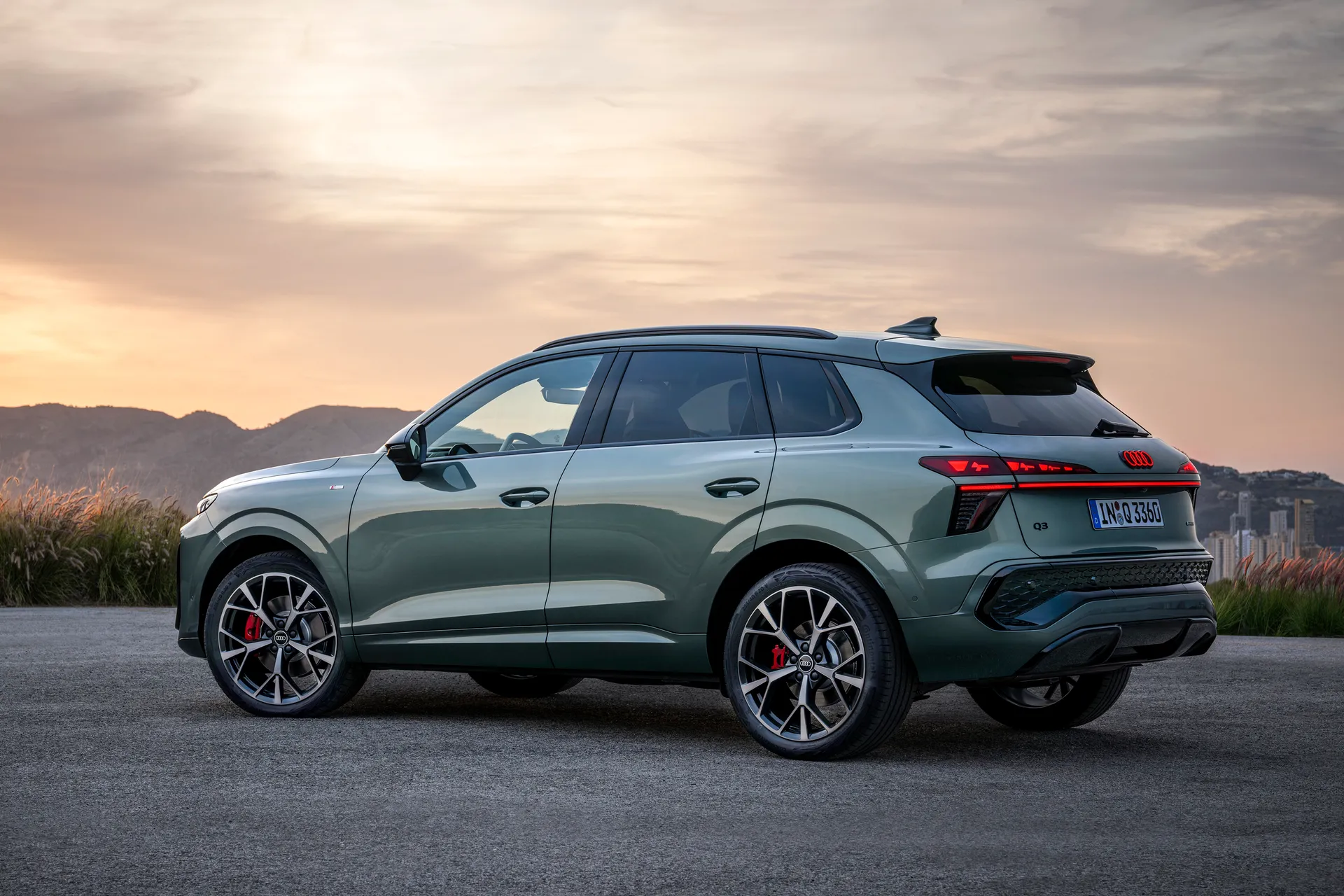
That's because the current WLTP emissions programme heavily flatters plug-in hybrids, which spend much of the test running on electricity alone. If you're able to make the most of its 72-mile electric-only range and have the engine cough to live for only a few short periods, you might well manage that 166.2mpg. On the other hand, run the battery flat, and the economy figure will soon plummet.
The diesel should be economical however you drive it. It can achieve up to 52.3mpg. The 150PS petrol isn't as far behind as you might expect at 46.3mpg, but it's a big drop in economy if opting for either of the 2.0-litre units. The 204PS version is rated at up to 36.2mpg, while the 265PS TFSI manages a mere 33.2mpg.
Audi Q3 reliability and warranty
It's too early to tell how the new Q3 might work out in terms of reliability, but it helps that it's powered by well-proven engines. Audi's overall reliability record is middling, with the brand placing 18th out of 33 manufacturers in the reliability section of the most recent HonestJohn.co.uk Satisfaction Index. That's two places behind arch rivals BMW, but far ahead of Mercedes-Benz, which managed a woeful 30th-place finish.
Audi Q3 insurance groups and costs
At the time of writing, these hadn't been confirmed. The old model ranged from groups 20 to 38, and we'd expect something similar this time.
VED car tax: What is the annual road tax on an Audi Q3?
The token £10 discount for 'hybrid and alternatively fuelled vehicles' was dropped in April 2025, so it's the same flat rate of £195 for all versions of the Q3, plug-in hybrid included.
Only the entry-level 1.5-litre Q3 in Sport trim sneaks under the £40,000 threshold for the government's premium car tax supplement, and only just, at £38,300, so a few options could push it over. That being the case, or if you go for any other version of the Q3, it's an extra £425 annually from years two to six of ownership.
Audi Q3 price
"The Audi Q3 range starts from £38,300, rising to over £51,000 for a plug-in hybrid in the top-spec trim."
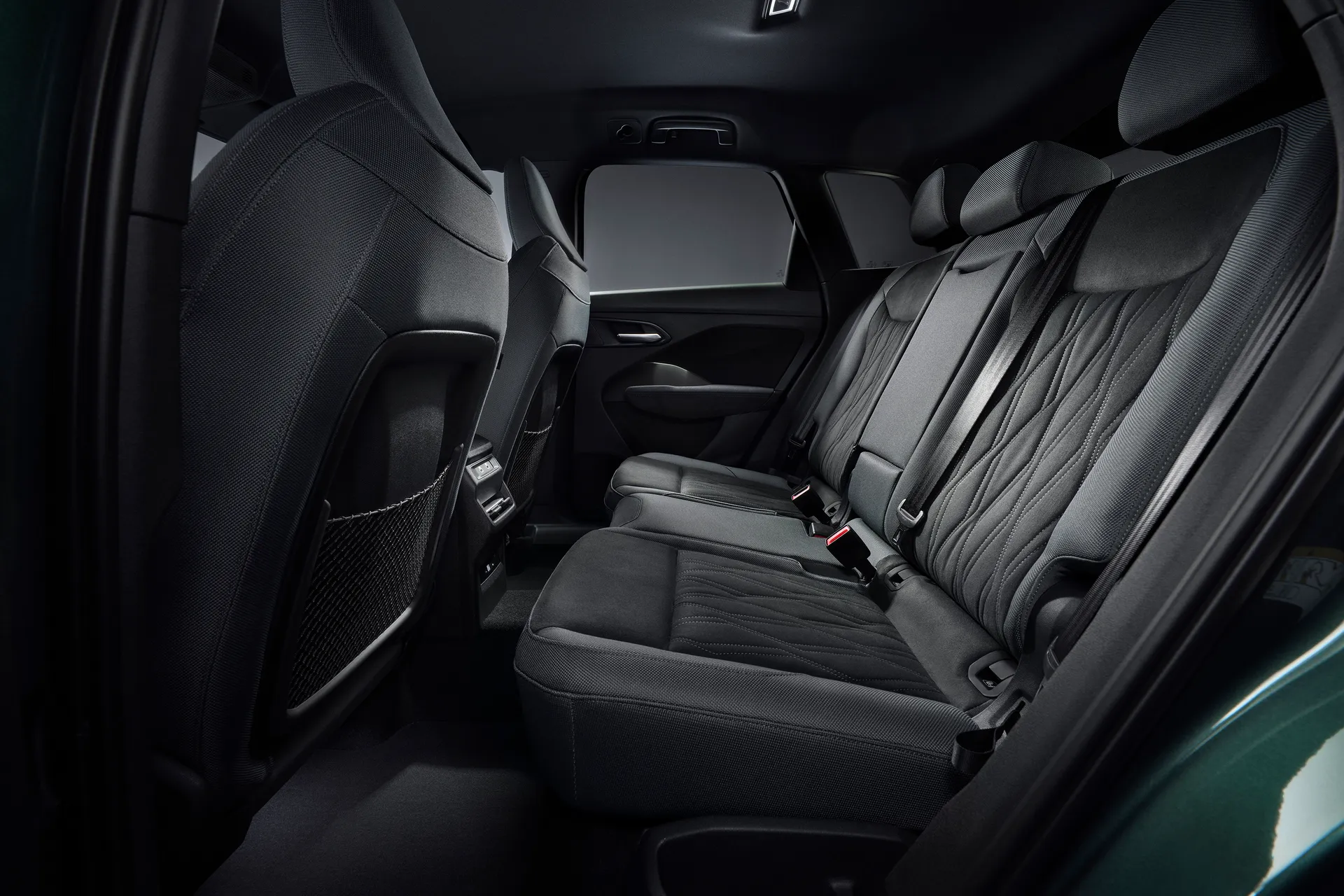
The entry point is the TFSI 150PS Sport, which rises to £41,100 in S Line trim and £44,650 as an Edition 1. For the 204PS TFSI it's £42,000, £44,800 or £48,350 depending on the trim you want, while the 265PS TFSI isn't available in Sport, so it's £48,900 for an S Line or £52,450 for an Edition 1.
The TDI comes in at £40,000, £42,8000 and £46,350, while the plug-in hybrid is £45,800, £48,600 and £51,350. Want the Sportback? Simply whack an extra £1,500 on top of any of these figures.
To put all that cost in some sort of context, the BMW X1 starts at just under £37,000, and the cheapest Mercedes-Benz GLA, which is just over £36,000, so the Audi does look a little pricey, especially in Sportback form.
Trim levels and standard equipment
Most Q3s are available in Sport, S Line and Edition 1 trim. The only exception is the 265PS TFSI petrol, which can't be combined with the base Sport trim.
Along with all the safety equipment mentioned earlier, the Sport comes with 18-inch alloy wheels, LED front and rear lights with automatic high beam, heated and electrically adjustable/folding mirrors with an automatic dimming feature, three-zone climate control, interior ambient lighting, leather steering wheel, 12.8-inch infotainment screen, an 11.9-inch digital instrument cluster and wireless smartphone charging.
S Line builds on the above with 19-inch alloy wheels, sportier S Line bumpers, snazzier LED light cluster with "selectable light signatures" at the front, illuminated Audi rings at the back (we're less sure about that bit), half leather/half faux leather seats, enhanced ambient lighting and a flat-bottomed steering wheel. Finally, Edition 1 trim adds 20-inch alloy wheels, black exterior styling touches, matrix LED headlights, microfibre trimmed seats, a heated steering wheel, microfibre interior trim and additional safety equipment.
Ask the heycar experts: common questions
When is the new Audi Q3 coming out?
Is the Audi Q3 a good car?
Is the Audi Q3 four-wheel drive?
Get our latest advice, news and offers
Keep me updated by email with the latest advice, news and offers from heycar.
By submitting you agree to our privacy policy
